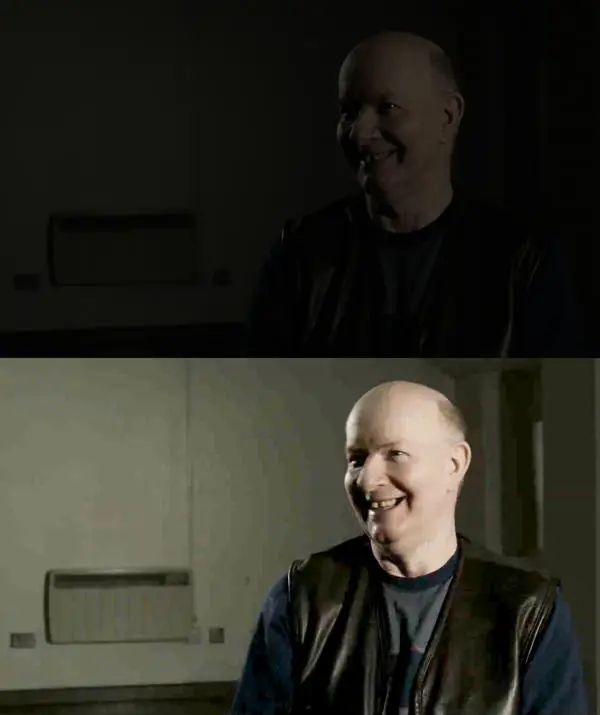Positive History: The National HIV Story Trust films
Filmed interviews are a fantastic resource for studying contemporary events. The power of oral histories to enrich our understanding of past events is already well-established. Whether it is through collecting individual testimonies or the collective voices of marginalised communities, there is an ever-increasing value given to these records, alongside more traditional archival collections.
Interviews captured on film are however a lesser-spotted resource in most archive services. Yet, as technology improves, the associated costs reduce and methods of access become more abundant, these sources are becoming more mainstream. The National HIV Story Trust (NHST) collection is one example among the collections at London Metropolitan Archives (LMA). The NHST was set up to film, record and preserve the history of those affected by the HIV/AIDS epidemic of the 1980s and 1990s. The intention of the charity is to produce a documentary based on the 100 in-depth interviews and 150 hours of footage, with the full-length interviews being preserved for future generations to document the lived experience of the epidemic and to be developed as an education resource for schools, colleges, and other interested parties.
A Wellcome Trust funded project, 'Positive History', made the interviews available for researchers in our Mediatheque, an in-house media viewing area here at LMA. Chris Olver, project archivist for the NHST strand of the project, writes about his work on the filmed interviews.
Creating archive surrogates
As part of my role as one of the Positive History project archivists, I have been tasked with creating accessible copies of the interviews. This role has required far more technical training than in my previous roles in archive services. The collection consists of over 1400 video clips and just under 10 terabytes of data. Due to the size of the files, it would not be practical or convenient to make like-for-like copies of them available. Therefore, my work initially involved finding a suitable file format which would retain the quality of the original production but would easily be playable for editing and access. Once the access format was identified the original video clips were converted.
The next stage of the project was to use Adobe Premiere to make full versions of the interviews. Each interview is made up of numerous film clips which had to be ordered sequentially. Subtitles were then exported into the sequence - this took considerable time, as each needed to be aligned with the film audio. Before the film is exported any redactions identified during the sensitivity review (see below) were carried out.
I am grateful that the workflow for the creation of the access copies had already been mapped out by my colleague and resident tech guru, Richard Green. The only amendment to the plan was to incorporate a small amount of audio and visual enhancement to the access interviews to make them suitable for research use. As NHST had created the interviews for use in TV and film productions, the interview footage deposited with LMA had not been colour graded, which would have occurred during post-production. While archivists are adverse to changing original records, this edict was outweighed by the need to optimise the films for visiting researchers.
An example of this work can be seen in the before-editing and after-editing stills from an interview recorded with George Hodson.

Sensitivity review of interviews
The interviews focus on the HIV/AIDS epidemic in the United Kingdom from the 1980s onwards and provide first-hand accounts of living with HIV through the early years of the epidemic, including experience of medical and community HIV care and support, and draw on the testimony of people living with HIV, carers, partners, relatives, friends, and healthcare practitioners. The stories told provide compelling and competing narratives of what it was like to live through the epidemic, where those affected were demonised, and where, prior to the success of anti-retroviral medication, HIV was seen as a death sentence. Many of the interviewees recount the loss of partners and loved ones, and reflect on bereavement, loss and the trauma of those years, but also express the love, friendship and solidarity that was shared, as well as laugh-out-loud anecdotes.
Due to the clearly sensitive nature of these interviews, it was important to undertake a data protection and ethical review. This work has been greatly assisted by the previous methodology created by the LMA’s Unlocking Our Sound Heritage (UOSH) project. The UOSH team had developed a Data Protection and Sensitivity Review form which provided a framework for identifying sensitive data for reviewing oral history interviews, which was directly applicable to the Positive History project. Using the sensitivity criteria, sections of interviews which contained sensitive data were flagged and a risk score allocated, depending on the nature of the issues raised.
Each issue was logged in detail and an action recommended based on the level of risk. On completion of the initial review, I met with a panel of other archivists at LMA to discuss the findings. Once the stated actions were approved by the panel, I started implementing the changes. For example, this could include carrying out redactions or in some cases contacting the interviewees to double-check they are happy for the interview to be made publicly available. This work has been greatly aided thanks to a close working relationship with NHST, who were able to contact interviewees on our behalf.